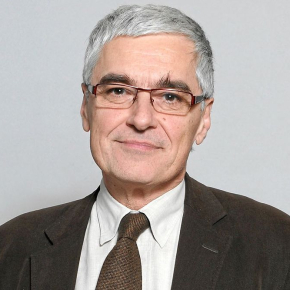Death of Jean-Paul Laumond, a pionner in motion planning for robotics
CNRS is deeply saddened to learn of the sudden death of Jean-Paul Laumond, Emeritus Research Director at DI-ENS, who was a leading figure in robotics, especially humanoid robotics.
The death of Jean-Paul Laumond, CNRS Emeritus Research Director, is a sad news that strikes the scientific community as a whole. Jean-Paul Laumond was an international reference, his human qualities were very much appreciated by all. He was one of the pioneers in humanoid robotics, and, in particular, in motion planning, which he approached using interdisciplinary approaches (graph theory, algorithmic geometry, automatic control, probabilistic algorithms and neuroscience).
Born in 1953, Jean-Paul Laumond was CNRS Director of Research Emeritus at DI-ENS in Paris since January 2019, after having been a researcher at LAAS-CNRS in Toulouse for 34 years. He obtained his master's degree in mathematics and defended his thesis on the modelling of the space of a mobile robot using planar graph decomposition at Paul Sabatier University. He first taught mathematics before joining the CNRS in 1985.
He first devoted himself to the study of non-holonomic systems (1986-2000), i.e. mechanical systems whose displacement capabilities are constrained (a car cannot move laterally for example). His work (1996-2004) then focused on the so-called "piano mover" problem, when the system, in addition to suffering from non-holonomic constraints, must move in a very small space. To cope with the intrinsic combinatorial complexity of this problem, he introduced new probabilistic paradigms for its resolution, in order to explore the different feasible solutions. This advance was fundamental on the theoretical level (introduction of an original control mechanism for random sampling methods), but also on the practical level by the development of a generic software platform; a platform that was later valorized in 2000 by the creation of the start-up, Kineo CAM. The company developed software components that are well established in the virtual prototyping sector for the automotive and aeronautics industries. Kineo was distinguished by the French Ministry of Research with its Innovation and Enterprise Award in 2000, and by the IEEE-IFR 3rd Prize for Innovation and Entrepreneurship in Robotics and Automation in 2005. The company was acquired in 2012 by Siemens.
From 2001, his main research topic has been the study of anthropomorphic movement. He participated to the creation of the France - Japan robotics laboratory JRL, which he directed from 2005 to 2008. In 2006, he launched the Gepetto team at LAAS-CNRS dedicated to the study of human motion from three perspectives: artificial motion of humanoid robots, virtual motion for digital actors and mannequins, and natural motion of human beings. His work has thus reached a new level of complexity by combining non-holonomic constraints related to humanoid walking and movement in restricted environments. His advances have enabled the development of robots capable of intervening in constrained spaces, such as after a disaster, or in reduced spaces in industry, in interaction with human operators. His research was supported first by the ANR Locanthrope project from 2007 to 2010, and then by his ERC Advanced Grant Actanthrope in 2014.
From 2019, he decided to collaborate with experts in artificial intelligence, and in particular computer vision, so as to integrate more closely artificial perception of the environment into motion planning. Since then, he has been a member of the DI-ENS Willow team (a joint Inria/ENS-PSL/CNRS project-team) and chair holder at the 3IA Prairie Institute (PaRis AI Research InstitutE), at the frontier between robotics and artificial intelligence.
His exemplary career covers all the facets of an exceptional researcher: scientific influence at the forefront, creation and direction of the Gepetto team at LAAS-CNRS, direction of the international Franco-Japanese laboratory JRL, founder of the start-up Kineo... In 2015 he joined the Academy of Technologies, and in 2017 he was elected as a member of the Academy of Sciences. A great scientist and thinker, Jean-Paul Laumond has been a schoolmaster. He has trained generations of PhD students, many of whom have gone on to become renowned researchers in both the public and private sectors.
Jean-Paul Laumond has often been called upon by the media for his expertise on humanoid robotics and autonomous systems. He was the scientific co-curator of the permanent exhibition Robots, opened in April 2019 at the Cité des Sciences in Paris. Tireless defender of his discipline and eager to transmit beyond the circle of experts, he co-organized with Daniel Andler a joint symposium between the Academy of Sciences and the Academy of Moral and Political Sciences on November 24, 2021 at the Institut de France, entitled "Myths and Machines - Robotics and Artificial Intelligence: thinking about technology today."
With the death of Jean-Paul Laumond, CNRS and French research have lost a colleague known worldwide and one of the pioneers in robotics.
To pay tribute to him
You can leave your testimony on the page set up by the LAAS
